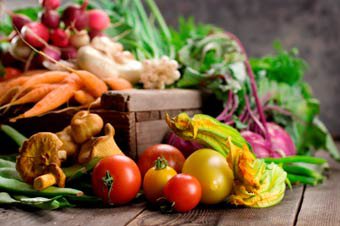9 Healthy Fall Foods
Take a moment, a quiet moment to reflect on your overall health and well-being. Now picture your body in good health. I mean in really Good Health, including healthy body weight, improved overall mood, less inflammation, less fatigue and well, happier. Imagine a choice of foods that were tasty, nutritious and good for your health – i.e. they helped you maintain a healthy body weight, improved your overall mood, and reduced your risk of developing diseases.
Perhaps you have tried a few, perhaps all or maybe none at all. I am here today to share with you the whys and how’s of 9 Healthy Fall Foods to add to your regime.
They include:
APPLES
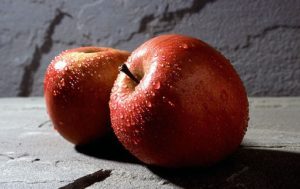
Apples are an excellent source of antioxidants, which combat free radicals. Free radicals are damaging substances generated in the body that cause undesirable changes and are involved in the aging process and some diseases.
Researchers at The Florida State University said that apples are a “miracle fruit”. In their study, the investigators found that older women who starting a regime of eating apples daily experienced a 23 percent drop in levels of bad cholesterol (LDL) and a 4% increase in good cholesterol (HDL) after just six months.
Recipes
Here are two easy ways to incorporate apples into your day:
1-Try this Kale and Apple Salad with Chia Lemon Dijon Dressing created by yours truly.
2-Sauerkraut with Apples: Try this fast and simple recipe served up by Epicurios.com
ALMONDS
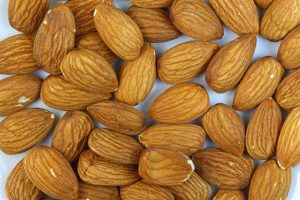
Almonds are rich in nutrients, including magnesium, vitamin E, iron, calcium, fiber, and riboflavin. A scientific review published in Nutrition Reviews found that almonds as a food may help maintain healthy cholesterol levels.
Easy ways to incorporate into your day:
Add as your first ingredient into your next smoothie
These smoothies are light, delicious, and not too sweet. If you prefer a thicker smoothie, add 1/4 cup plain yogurt. Almond milk is a dairy-free product made from ground almonds; it’s available at some supermarkets and at specialty foods stores and natural foods stores. Get the Recipe
Recipe-Ever made your own roasting Almonds? Try this Simple Roasted Almonds recipe from Geniuiskitchen.com
Author’s note– Be sure to purchase fresh almonds and not almonds that are “smoked” or “salted”- those are generally already roasted.
BROCCOLI
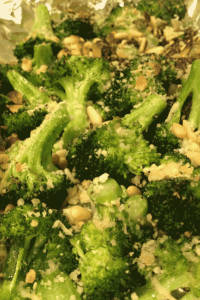
Broccoli is rich in fiber, calcium, potassium, folate and phytonutrients. Phytonutrients are compounds which reduce the risk of developing heart disease, diabetes and some cancers. Broccoli also contains vitamin C, as well as beta-carotene, an antioxidant.
A single 100 gram serving of broccoli can provide you with over 150 percent of the recommended daily intake of vitamin C, which in large doses can potentially shorten the duration of the common cold.7
Another ingredient, sulforaphane, which exists in broccoli, is also said to have anti-cancer as well as anti-inflammatory qualities. However, overcooking can destroy most of the benefits.
Recipe–One of my quick and easy go to dishes is this Sautéed Broccoli-Shitake Skillet with Panko Nut Crust
BLUEBERRIES
Blueberries are rich in fiber, antioxidants and phytonutrients. Phytonutrients are natural chemicals found in plants.
Unlike minerals and vitamins that are also found in plant foods, phytonutrients are not essential for keeping us alive. However, they may help prevent disease and keep the body working properly.
According to a study carried out at Harvard Medical School, elderly people who eat plenty of blueberries (and strawberries) are less likely to suffer from cognitive decline, compared to other people of their age who do not.
Regular blueberry consumption can reduce the risk of hypertension (high blood pressure) by 10%, because of the berry’s bioactive compounds, anthocyanins, scientists from East Anglia University, England, and Harvard University, USA reported in the American Journal of Nutrition.12
Recent developments on the benefits of blueberries from MNT news
Blueberries and strawberries may reduce women’s risk of heart attack. Women could reduce their risk of heart attack by as much as 33 percent by eating three or more servings of blueberries and strawberries per week.
OILY FISH

Examples of oily fish include salmon, trout, mackerel, herring, sardines and anchovies.
These types of fish have oil in their tissues and around the gut. Their lean fillets contain up to 30% oil, specifically, omega-3 fatty acids. These oils are known to provide benefits for the heart, as well as the nervous system.
Oily fish are also known to provide benefits for patients with inflammatory conditions, such as arthritis.
Oily fish also contain vitamins A and D.
Scientists at UCLA’s Jonsson Comprehensive Cancer Center found that prostate cancer progression was significantly slowed when patients went on a low-fat diet with fish oil supplements.
Oily fish are rich in omega-3 fatty acids. Recent developments on the benefits of oily fish from MNT news.
Eating oily fish could cut your risk of rheumatoid arthritis. Eating one portion of oily fish every week could reduce your risk of developing rheumatoid arthritis by 50%, according to a study published in the journal Annals of the Rheumatic Diseases.
LEAFY GREEN VEGETABLES
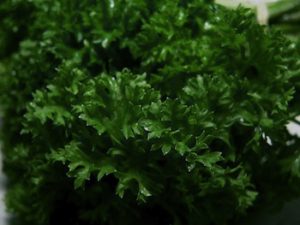
Studies have shown that a high intake of dark-leafy vegetables, such as spinach or cabbage may significantly lower a person’s risk of developing diabetes type 2.
Spinach, for example, is very rich in antioxidants, especially when uncooked, steamed or very lightly boiled. It is a good source of vitamins A, B6, C, E and K, as well as selenium, niacin, zinc, phosphorus, copper, folic acid, potassium, calcium, manganese, betaine, and iron.
Recipe– Easy Beans and Greens is delicious and packed full of nutrition.
SWEET POTATOES

Sweet potatoes are chart toppers in beta carotene, which protects against damaging free radicals. Further, beta carotene converts to vitamin A which is one of the key components of healthy skin. Keep in mind that your skin is part of your immune system; it is your first line of defense
The Center for Science in the Public Interest, USA, compared the nutritional value of sweet potatoes to other vegetables.17 The sweet potato ranked number one, when vitamins A and C, iron, calcium, protein and complex carbohydrates were considered.
Recipe– Here is a delicious take on Potato Salad featuring; you guessed it, sweet potatoes.
AVOCADOS
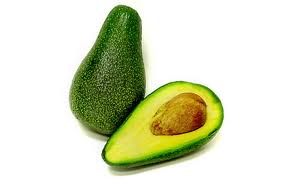
Many people avoid avocados because of its high fat content; they believe that avoiding all fats leads to better health and easier-to-control body weight – this is a myth. Approximately 75% of the calories in an avocado come from fat; mostly monosaturated fat.
Weight-for-weight, avocados have 35% more potassium than bananas.
Studies have shown that regular avocado consumption lowers blood cholesterol levels.
Avocado extracts are currently being studied in the laboratory to see whether they might be useful for treating diabetes or hypertension.
One-fifth of a medium California avocado (1 ounce) provides 8 percent of the Daily Value for fiber, while enjoying one-half of a medium California avocado provides 20 percent of the Daily Value for fiber.
Naturally sodium-free and cholesterol-free, California Avocados act as a nutrient booster by enabling the body to absorb more fat-soluble nutrients, such as alpha- and beta-carotene as well as lutein, in foods that are eaten with the fruit.
Researchers from Ohio State University found that nutrients taken from avocados were able to stop oral cancer cells, and even destroy some of the pre-cancerous cells.
Here are just a few of the vitamin and mineral highlights packed in this gorgeous little fruit:
Nutrient DRI/DV: pantothenic acid- 41.6%, fiber- 40.2%, vitamin K-35%, copper- 31.1%, folate- 30.3%, vitamin B6- 22.9%, potassium- 20.7%, vitamin E- 20.7%, and vitamin C – 20%.
Recipes: Sweet and Delicious Chocolate, Avocado and Almond Butter Pudding and Baked Avocado Tacos
SAUERKRAUT
Many peoples in the world, including Germans, Japanese and Chinese, consider it important to include fermented foods in their diets. Natural pickles, Korean Kimchi, tempeh and miso (made from soy) as well as high quality yogurt are all sources of the friendly cultures found in sauerkraut.
Unfortunately, most of today’s commercially available sauerkraut is pasteurized and “dead” – that is, it lacks the beneficial bacterial cultures that make it so good for us. Instead, all you get is a lot of salt. To get the health benefits, look for fresh sauerkraut in the refrigerated sections of natural food stores and in barrels in delicatessens that still make their own. Or, even better, make it yourself.
Sauerkraut contains high levels of dietary fiber, as well as significant levels of vitamin A, vitamin C, vitamin K, and various B vitamins. Furthermore, it is a good source of iron, manganese, copper, sodium, magnesium, and calcium, in addition to contributing a moderate amount of protein to your diet.
Cabbage is famed for its high fiber content, which is well-known as one of the key points in any diet for the benefit of digestive health.
Recipe– Make your own Sauerkraut. We found this recipe on Food Network that fits the bill. Recipe author-Alton Brown
Sources:
http://www.medicalnewstoday.com
https://www.drweil.com/health-wellness/balanced-living/meet-dr-weil/dr-weils-homemade-sauerkraut/
http://www.cspinet.org
http://www.medicalnewstoday.com
DISCLAIMER–The views and opinions expressed here are based solely on personal experience, research and my interactions other professionals in the field of health and wellness. This article is not a diagnose, or medically based advise. Your experiences and sentiments may differ from my own. If you are suffering from any serious medical condition, you should consult your doctor or naturopath for a diagnosis.

